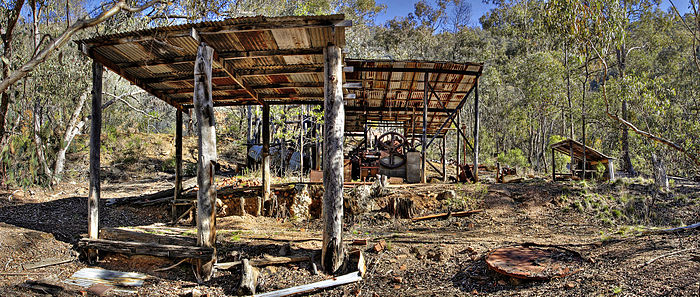Difference between revisions of "AY Honors/Gold Prospecting/Answer Key"
(No difference)
|
Revision as of 06:58, 2 December 2006
The Victorian gold rush was a period in the history of Victoria in Australia between approximately 1851 and the early 1860s. Aca, Doru
Major and long lasting impact
The gold rush had a large influence on Melbourne, on Victoria, and on Australia as a whole. It touched every aspect of society and elements of it are still clearly visible today. The influx of wealth that gold brought soon made Victoria Australia's richest state by far, and Melbourne the nation's largest city.
Australia's population changed dramatically as a result of the rushes. In 1851 the Australian population was 437,655, of which 77,345, or just under 18%, were Victorians. A decade later the Australian population had grown to 1,151,947 and the Victorian population had increased to 538,628; just under 47% of the Australian total and a seven-fold increase. In some small country towns where gold was found aboundant, the population could grow of over 1000% in a decade (e.g. Rutherglen had a population of ~2'000. Ten years later, it had ~60'000 which is a 3000% increase). The rapid growth was predominantly a result of the gold rushes.&
Although most goldfields were exhausted by the end of the 19th century, and much of the profit was sent back to the United Kingdom, enough remained to fund substantial development of industry and infrastructure.
The Eureka Stockade, an armed protest or revolt over what the miners perceived as unfair policing and "taxation without representation", is widely regarded as important in Victoria and Australia's democratic development.
The gold rush is reflected in the architecture of Victorian gold-boom cities like Melbourne, Castlemaine, Ballarat, Bendigo, Ararat, Maldon and Beechworth. Ballarat has Sovereign Hill — a 60 acre (240,000 m²) recreation of a gold rush town — as well as the Gold Museum. At the other end of the spectrum are near or actual ghost towns, such as Walhalla, Mafeking and Steiglitz.
The last major gold rush in Victoria was at Beringa, south of Ballarat, in the first decade of the 20th century. Gold mining later virtually ceased in Victoria, not because there was no more gold but in the main because of the depth and cost of pumping. The First World War also drained Australia of the labour needed to work the mines. However, as of 2005 the recent increase in the gold price has seen a resurgence in commercial mining activity; mining has resumed in Bendigo, Ballarat, and exploration proceeds elsewhere, for example, in Glen Wills, an isolated mountain area near Mitta Mitta in north-eastern Victoria.

See also
References
Further reading
- Nothing but Gold Robyn Annear ISBN 1-876485-07-8
- Walhalla Heyday G.F. James & C.G. Lee ISBN 0-9596311-3-5
- Walhalla: Valley of Gold John Aldersea & Barbara Hood ISBN 0-9750887-0-X
External links
- ↑ Caldwell, J. C. (1987). "Chapter 2: Population". In Wray Vamplew (ed.). Australians: Historical Statistics. Broadway, New South Wales, Australia: Fairfax, Syme & Weldon Associates. pp. pages 23 and 26. ISBN 0-949288-29-2.
